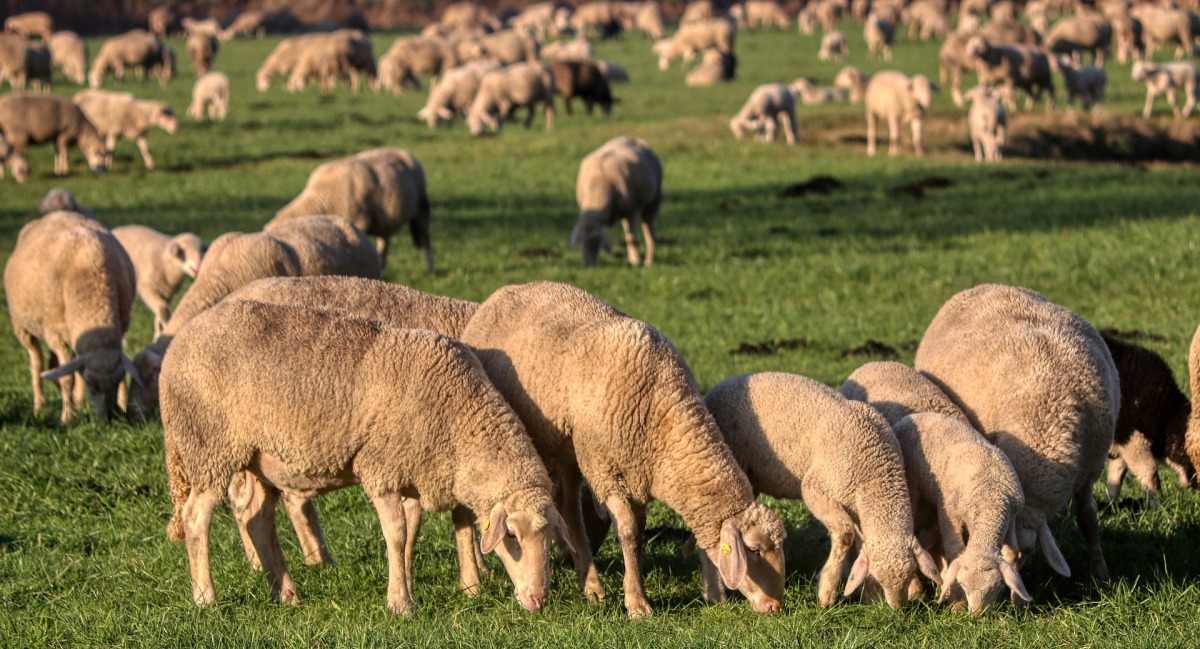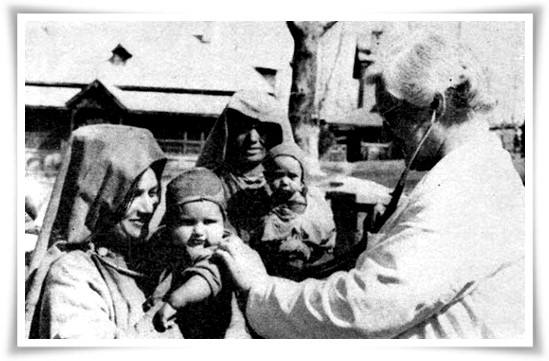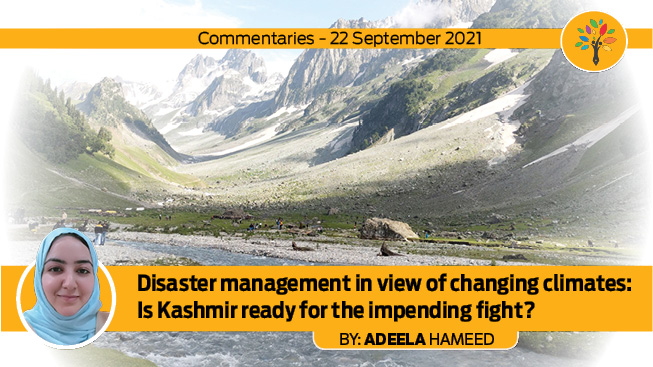The subsequent COVID-19 lockdowns shrank avenues of labour employment, thereby impacting the livelihoods of the unorganized and unskilled workforce of the country. However, Mahatma Gandhi National Rural Employment Guarantee Act (MGNREGA) played a vital role in facilitating job opportunities in rural India and thus coming to the rescue of unskilled and unorganized labourers who were struggling to make ends meet in a dire economic situation.
Worth mentioning, the MGNREGA has the objective of enhancing livelihood security in rural areas by providing at least 100 days of guaranteed wage employment in a financial year to every household whose adult members volunteer to do unskilled manual labour.
On the contrary, in Jammu and Kashmir, the objectives of the MGNREGA have been compromised. A cursory look at the works executed under the Act reveals that the rural employment guarantee programme, marked by official apathy, is plagued with corruption and favouritism.
According to the official data, in 4542 Gram Panchayats of Jammu and Kashmir, 13.24 lakhs job cards have been issued and among them 9.6 lakhs are active. While the total number of registered workers is 23.05 lakhs of which 15.41 lakh workers are active. However, facts on the ground reveal that the majority of the job cardholders did not receive any benefits in return.
Overview of MGNREGA
From 1947 to 2017, the Indian economy was premised on the concept of planning. This was carried through the Five-Year Plans, developed, executed, and monitored by the Planning Commission (1951-2014) and the NITI Aayog (2015-2017). The Tenth Five-Year Plan (2002–2007) was aimed at generating quality employment opportunities to achieve a satisfactory rate of employment. Therefore, the government of India launched an employment generation program called Mahatma Gandhi National Rural Employment Guarantee Act (MGNREGA) in 2005. The act is an innovative anti-poverty intervention, promising to provide the legal right to work and guarantee 100 days of employment in a financial year to each registered household on demand. The motives of the scheme are to eradicate poverty in rural areas, women empowerment, childcare, the creation of durable assets, etc. The significance of this employment scheme was felt immensely in this ongoing pandemic as the nationwide lockdown resulted in millions of unskilled workers losing their jobs. The sudden halt on economic activities forced millions of casual laborers to go back to their native places. In such circumstances, MGNREGA proved to be the panacea to tackle the rising demands of daily workers to earn a livelihood.
As per the Rural Development ministry, 1.85 crore people have been given work through the rural employment scheme till May (2021) that is 52% higher compared to 1.22 crore in 2019 in the same period. “As of 13th May 2021, 2.95 crore persons have been offered work in FY 2021-22 completing 5.98 lakh assets and generating 34.56 crore person-days. The accomplishment has been achieved despite casualties either through death or infection among the operating staff at all levels, including those in the frontline,” the ministry said.
Demand for work is always on the rise, and several states have curtailed the spending on the material to cope with this challenge. As per the rules of MGNREGA, the wage-material ratio should be maintained in the proportion of 60:40. In Chhattisgarh and Jharkhand, the material cost has been decreased and wage funds were set up at 73% and 97% respectively. Similarly, in Karnataka and Madhya Pradesh, 81 and 85% of the funds were constituted for making wage payments. The total expenditure under MGNREGA by states, as of June 15, stood at Rs 19,62,689 crore.
MGNREGA in Jammu & Kashmir
During the COVID-19 pandemic, when states were trying to tackle the challenges confronting unorganized workforce by relying on the social security measure MGNREGA, here in Jammu and Kashmir the act was marred by corruption and misappropriation. Fourteen years after the implementation of MGNREGA in Jammu and Kashmir, the agencies that were supposed to oversee the rollout of the scheme have not been activated and guidelines related to the act are not being followed. Consequently, the act has been altered unofficially to grease the palms of officials and loot the public money. This has been done by providing an excuse that certain rules enshrined in the act are against the labor setup of Jammu and Kashmir, “which is why it was compulsory to make some alterations for better implementation of the scheme at the ground level”. However, it has done no good to the labourers but has resulted in a nexus between contractors and government officials who are making it possible that the considerable benefits are grabbed by resourceful individuals and deserving individuals are kept out. To prove the point, the data available on the official website of MGNREGA has been forged. There are several individuals (verified by the author) who have never worked under MGNREGA but as per the data available on the official website, they have completed 100 days of employment in FY 2019-20.
In March 2018, Kashmir Reader published a news report on how several individuals in Rathsona Block of Beerwah in Budgam district received MGNREGA funds without engaging in any works. These individuals were also found transferring the money to contractors. This report provides a glaring example of the embezzlement of public funds and makes it clear why, even years after its implementation, the act has failed to produce anticipated results.
In September 2020, the Comptroller and Auditor General of India highlighted the failure of the PDP-BJP government in the proper implementation of the Mahatma Gandhi National Rural Employment Guarantee Act (MGNREGA) in Jammu and Kashmir during 2016-17, saying long-term developmental perspective for all districts could not be ensured due to non-preparation of a perspective plan.
As per the rules, MGNREGA sans the contract system but contractors do exist. Nevertheless, the malpractice continues to prevail in Jammu and Kashmir. The concerned department is allowing blue-eyed villagers or Panchayat officials to invest in MGNREGA works. They hire a few skilled workers and use machinery to finish the work quickly. This helps them save labor and money that goes against the basic principle of the MGNREGA. Also, during the execution of the works, no serious monitoring is done at the worksites, which leaves the scope for use of substandard material and forging the muster roll (file that mentions the details of the laborers). Moreover, taking advantage of the official apathy, the contractors enlist the names of friends and relatives in the muster roll and get the funds transferred electronically to them through Direct Benefit Transfer (DBT). These are deep-seated problems in almost every Panchayat, and no one neither villagers nor the system, seem to be bothered to resolve them.
This illegal system, under the guise of social security measures MGNREGA, is running smoothly because of several reasons. The Gram Sabah plans are not being materialized as the middlemen or contractors have hijacked the developmental initiatives of villages. The interests of few overlay the interests of the whole population. Thus, despite spending a huge amount on village developmental programs; the countryside of Jammu and Kashmir has not shown any significant progress on the ground level. The agencies at district and Panchayat levels that are supposed to inspect and prevent corruption continue to remain inactive. For example, in 2009 the government ordered the appointment of an Ombudsman (Lok Pal) in every district to hear the complaints regarding MGNREGA. However, the full implementation of this order remains in question.
The wages fixed by the government for laborers are half of what they are in the market as a result the MGNREGA job card holders are not showing interest to work in MGNREGA and this has left a scope for embezzlement of funds.
Abid Ahmad Koka carried out a comparative study titled, “Expenditure Incurred and Average Wage Differences under MGNREGA in Jammu and Kashmir and Haryana.” The researcher found that in the financial year 2012-13, J&K spent Rs 48447.82 lakhs more than Haryana. In the financial year 2017-18 up to September 2017, J&K spent Rs 54683.39 lakhs, again more than Haryana. As far as the average wage rate of J&K and Haryana is concerned, in 2012-13, the average wages paid in J&K were Rs 130.74 while the average wages paid in Haryana were Rs 191.81. In this period Haryana paid Rs 61.07 more than J&K. while as in the financial year 2017-18 up to September 2017 Haryana paid Rs 99.60 more than J&K. The expenditure on MGNREGA in J&K remains higher than Haryana while the average wages paid in J&K is always lower than Haryana despite the lower population of J&K than Haryana.
As far as the wage rate under MGNREGA is concerned, Jammu and Kashmir falls among the lowest paid states. The highest-paid state is Haryana (Rs 315), Chhattisgarh, and Madhya Pradesh are the lowest at Rs 193, while the J&K wage rate stands at 214. However, the wage list of MGNREGA is below the minimum wage throughout the country. The expert committee appointed by the Ministry of Labour & Employment recommended the minimum amount required for a worker to meet necessities was Rs 375 per day. However, the current MGNREGA wage lists don’t meet this benchmark.
Conclusion
Over the past 16 years, several states including Rajasthan, Andhra Pradesh, Himachal Pradesh, Kerala, etc changed the developmental scenario of villages through MGNREGA, along with providing an alternative avenue for employment. MGNREGA that guarantees a job within a radius of 5 kilometres could have played a crucial role in developing villages and providing employment opportunities to the downtrodden section of society in Jammu and Kashmir. But, unfortunately, this job-oriented scheme has only served the interests of a few. Whereas, deserving individuals were pushed from pillar to post in search of a job.
It is high time that the administration should revisit its objectives of eradication of poverty in rural areas, women empowerment, childcare, employment generations, and development. This could be possible by making gram Panchayat work with transparency, accountability, and efficiency.
Recommendations
- The interests of a few individuals or Panchayat officials should not overlay the interests of the whole population. Every work should be assigned from Gram Sabah and later its detailed execution should be revealed to Gram Sabah so that muster rolls are not forged. This will also restrict the powers of Panchayat officials.
- Government should appoint the ombudsman in every district, who according to rules is supposed to act as Lok Pal for MGNREGA at the district level. The ombudsman will oversee the MGNREGA works and will help to prevent corruption. As the complaints regarding the embezzlement of MGNREGA are surging at an alarming pace, it is compulsory to appoint the Ombudsman in all the districts.
- The villagers are mostly engaged in agricultural activities. They are not opting for low wages under the scheme. The administration should provide them with work near their agricultural lands, and the process of acquiring work shouldn’t be cumbersome. This could be possible by establishing Bharat Nirman Rajiv Gandhi Sewa Kendre (BNGRSK) at every Gram Panchayat to enable efficient execution of MGNREGA works with accountability and transparency. It will also help to eliminate the middlemen system in Panchayats.
- The government should give greater impetus to MGNREGA by covering the wages of workers under the minimum wages act.
References:
Commitee_on_Determination_of_Methodology.pdf
(PDF) Expenditure Incurred and Average Wage Differences under MGNREGA in Jammu and Kashmir and Haryana: A Comparative Study (researchgate.net)
States Slash Spending On Material To Increase Income For Poor Under MGNREGA (moneycontrol.com)
Bharat Nirman Rajeev Gandhi Sewa Kendra (BNRGSK) | Official website of State Rural Employment Society, Government of Meghalaya, India (measures.nic.in)
MGNREGS: How the employment guarantee scheme holds up after 14 years (downtoearth.org.in)
Mahatma Gandhi National Rural Employment Guarantee Act (mnregaweb2.nic.in)








Leave a Reply
You must belogged in to post a comment.